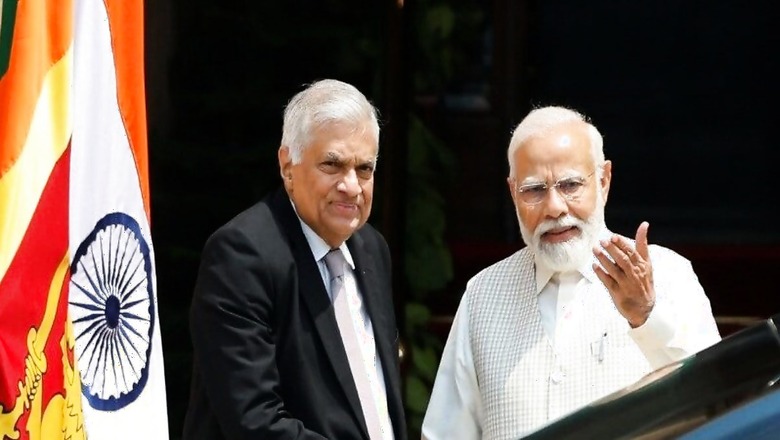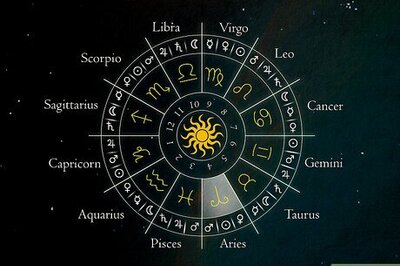
views
Despite Challenges, India is Batting on Front Foot in its Neighbourhood
The adage is indeed true – you cannot change your neighbours. For far too long, many foreign policy enthusiasts and geopolitical geeks have lamented the fact that China has been making inroads into what was traditionally India’s exclusive spheres of influence – or so we thought. They are not entirely wrong, but to blame India incessantly, without recognising the major wins as and when they come is not right either. One must recognise the fact that China, much like India, is not just a strong regional power. It is, indeed, a hefty global player too.
As such, it is simply unrealistic to think that India will keep winning against Beijing. There will be days it wins and days when it loses. There will be times when its Neighbourhood First-driven foreign policy upstages China, and there will also be times when it is humbled by Beijing. This is how the game is, and will remain for at least some years to come.
For what it’s worth, one can say that China’s future does not look very bright. India, on the other hand, is just starting its journey towards becoming a great world power. The vision for a “Viksit Bharat” by 2047 is not just a fancy slogan. It is, for all practical purposes, a deadline set by Narendra Modi for India to become a global superpower. Until then, patience is key, and there will come a day when India wins most of the geopolitical battles that come its way. The reality right now, however, is that India is just about a $4 trillion economy. China, on the other hand, has 14 more trillion in its Gross Domestic Product (GDP). That is a staggering gap and comes with a set of advantages exclusively available to Beijing.
So, India is up against a giant. What is commendable though, is that New Delhi is now aggressively pushing back and bravely standing up to China – publicly so. All you need to do is read some recent Indian statements on the situation in the South China Sea, and you will recognise the shift in India’s approach to dealing with Beijing.
However, I emphasise that there will be days when India loses. This will continue to happen until asymmetry is achieved in not just economic parameters, but also the military and security front. Until then, there is a need to watch out for trends; recognise where India is winning and also talk about the challenges its foreign policy needs to overcome.
Sri Lanka’s Not-So-Subtle Message to China and Why India Has Reason to Celebrate
Sri Lanka is an interesting country. Recently in an interview, Sri Lanka’s Minister of State for Foreign Affairs, Tharaka Balasuriya hailed his country’s “civilisational link” with India. China was mentioned too, but only as an “important trading partner”. That gives us a sense of what is brewing in the power corridors of Colombo.
The biggest highlight of Sri Lanka’s ongoing pivot away from China is its decision to scrap a tender won by a Chinese company to build power generation facilities in the island nation. The story takes a dramatic turn when one realises that not only did Sri Lanka scrap the tender with China, but chose to award the project to India instead. The project involves the construction of three solar and wind hybrid power generation facilities. Initially financed by an Asian Development Bank (ADB) loan, the project was temporarily shelved two years ago after India raised concerns over China’s involvement.
The win for New Delhi came last Friday, as Sri Lanka’s energy ministry said that the project had been revived and was now fully funded by an $11 million Indian government grant. Accordingly, renewables firm U-Solar from Bengaluru will build the facilities on islets near the northern city of Jaffna, not far from India’s southern coast. In fact, the proximity of these facilities to India’s southern coast is what prompted New Delhi to object to China’s involvement in the project. The project includes installing transmission infrastructure, distribution networks, setting up 70 charging stations and providing solar panels to villages. Various sustainability features like LED street lighting, smart meters and microgrids with remote monitoring are also incorporated.
The power project aside, India also scored a significant win against China in January, when Sri Lanka decided that it would not allow any Chinese research vessel to dock at its ports or operate within its Exclusive Economic Zone (EEZ) for one year. The direct implication of this decision was that Colombo effectively denied entry to Chinese vessel Xiang Yang Hong 3, which was scheduled to conduct “deep water exploration” in the south Indian Ocean from January to late May.
While Sri Lanka is turning towards India, the Maldives has chosen to tread in the opposite direction – for reasons best known to its new pro-China President, Mohamed Muizzu. While Sri Lanka denied entry to the suspected Chinese spy vessel, the Maldives welcomed it with open arms.
In response, India dispatched the submarine INS Karanj to one of Sri Lanka’s main ports. As INS Karanj arrived at the Colombo Port in the first week of February, the Sri Lankan Navy accorded it a ceremonial welcome. One could argue that New Delhi and Colombo joined hands in sending a united signal to both Beijing and Male. Besides, India acted decisively by confronting Male on the issue of certain ministers of President Muizzu passing objectionable comments against Prime Minister Modi and Indians at large.
Sri Lanka, on the other hand, has understood who its real friend is. However, it has learnt this the hard way. At the height of Sri Lanka’s economic crisis in 2021 and 2022, China pretty much remained absent from action. Beijing offered not more than a few million dollars as immediate aid, and ignored the island nation’s requests for loan restructuring. By the way, China is Sri Lanka’s biggest external creditor and Chinese loans are one of the primary reasons why Colombo finds itself in a giant economic mess. This is because China’s debt-trap policy has matured rather remarkably in Sri Lanka.
While China dragged its feet, India rushed to the crisis-hit island nation’s rescue. For example, at the height of the financial and economic crisis in Sri Lanka, India swiftly extended a lifeline to the country with assistance of over $4 billion, surpassing even the International Monetary Fund’s 48-month bailout of about $3 billion. Military-to-military ties between the two sides also witnessed a fillip, as many Indian naval ships, including the INS Batti Malv, INS Nireekshak, and INS Delhi docked at Sri Lankan ports throughout 2023.
Not Just Sri Lanka, India Has Extended a Helping Hand to the Entire Subcontinent
China has been using its money power to win over smaller countries in India’s neighbourhood. This is in line with Beijing’s broad “String of Pearls” strategy to encircle India. As a result, it became necessary for India to step up its own game and start aiding countries in the region more aggressively. As a result, India has so far offered 308 lines of credit (LOC), worth about $32.02 billion, to various partners in Asia and Africa.
These funds have supported more than 600 development projects in sectors such as infrastructure, power, connectivity and health across countries of the Global South. About $17.06 billion has gone to countries in Asia, and the largest concessional credit given by India to a country has been to Bangladesh, worth about $8 billion. India also stood steadfast with Bangladesh in recent months, as the West attempted to weaken Sheikh Hasina’s government and remove her from power. India came out in open support of Hasina, and rightfully so. For India, Islamists getting power in Bangladesh was simply a no-brainer. By supporting Sheikh Hasina, New Delhi successfully sent a message across the region that it stands by India’s friends.
Importantly, between 2014 and 2020, India’s lines of credit to its neighbours increased fourfold, going from $3.27 billion to $14.7 billion. This shows that the Modi government has been taking the initiative to counter China from the word go.
While the victories must be commended, the challenges need to be pointed out too. For India, the biggest concern remains China’s determined wish to replace it as the sole power centre in Asia. It goes without saying that this Chinese strategy is here to stay. Beijing’s romance with Pakistan, its constant meddling in Nepal and of course, its growing friendship with the Maldives remain India’s biggest challenges.
China is also attempting to wean countries in the Indian Ocean Region away from New Delhi. While victory and defeat are both part of this game, India must make sure it wins more battles than it loses. Only that, apart from solid economic growth and strengthening of its domestic military-industrial complex can ensure India’s continuity as the dominant player in South Asia and the wider Indian Ocean Region.
Views expressed in the above piece are personal and solely that of the author. They do not necessarily reflect News18’s views.





















Comments
0 comment